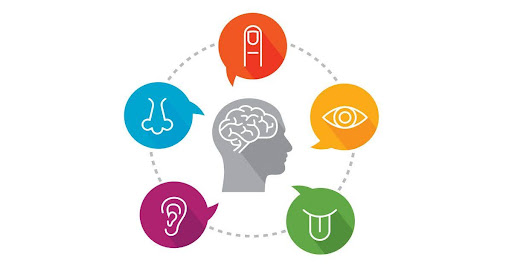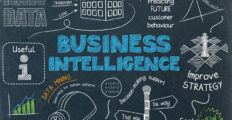Understanding the Sensory Gap in Online Shopping
You’re shopping online for a new jacket.
The photos look great, but something’s missing…
❌ You can’t feel the fabric between your fingers.
❌ You can’t try it on to see how it moves.
❌ You can’t smell the leather.
This is the sensory gap in online shopping.
And it’s what smart marketers are now working to bridge.
As a matter of fact, our brains crave sensory input.
When we shop in person, we use all five senses to make decisions.
Online, we’ve traditionally been limited to just one: sight.
But this is changing – and changing fast.

How Our Brains Process Sensory Information Online
The human brain is remarkably adaptable. Our brains exhibit extraordinary adaptability. When confronted with new challenges, they can rewire themselves to help us overcome obstacles.
For instance, when we learn a new language, our brains create fresh neural pathways to store the information.
It can create sensory experiences even when they’re not physically present.
In fact, neuroscience shows that when we see a rich, detailed image of velvet, our brain activates many of the same neural pathways as if we were actually touching velvet.
This means that carefully crafted sensory marketing doesn’t just describe experiences – it creates them.
To be honest, I was skeptical too until I saw the data. Research from the Journal of Consumer Psychology found that detailed sensory descriptions can increase purchase intent by up to 86%.
And no, that doesn’t mean simply adding more adjectives.
It means strategically evoking sensory experiences through your digital presence.
The Emotional Power of Multi-Sensory Experiences
Here’s an interesting statistic: we remember only 10% of what we read but 90% of what we experience through multiple senses.
This explains why certain brands stick in our memory while others fade away.
When Apple unveils a new product, they don’t just show tech specs. They create videos where you can almost hear the satisfying click of the buttons and feel the smooth glass against your fingers.
Similarly, luxury car websites don’t just display vehicle features. They use high-definition engine sounds and dynamic visuals that make you feel the acceleration in your gut. This same sensory strategy is being adopted in unexpected industries – take online gambling, for instance. Platforms are increasingly using immersive visuals and sound design to simulate the feel of a real casino floor. It’s a fascinating parallel to how crypto casinos work, blending digital experiences with sensory cues to recreate trust, excitement, and engagement without physical presence.
But then again, sensory marketing isn’t just for luxury products. It works for everything from grocery items to software.
What I love most about effective sensory marketing is how it creates an emotional bridge between digital and physical reality.
Why Traditional Marketing Is No Longer Enough
Traditional digital marketing focuses on features, benefits, and visual appeal. It was logical, straightforward, and… increasingly ignored.
Above all, standing out in today’s crowded marketplace requires more than telling customers why they should buy.
You need to let them experience why they should buy.
On the contrary, brands still relying solely on feature lists and standard product images are finding themselves at a significant disadvantage.
It’s kinda like the analogy of watching a concert on TV versus being there in person. Both show you the same event, but only one delivers the full sensory experience that creates lasting memories.
For this reason, forward-thinking companies are reimagining their entire digital presence through a sensory lens.
Equally important, they’re finding that sensory marketing doesn’t just drive conversions – it builds deeper brand connections that translate to loyalty and word-of-mouth.
In effect, sensory marketing creates a virtuous cycle. Better sensory experiences lead to stronger emotional connections, which lead to more purchases and greater brand advocacy.
The Five Senses in Digital Marketing

We’ve mastered the visual online. Or have we?
While most brands focus on aesthetics, true visual sensory marketing goes deeper.
It’s not about pretty pictures. It’s about creating visual experiences that trigger emotional and physical responses.
Take color psychology. A study by the University of Winnipeg found that people make subconscious judgments about products within 90 seconds – and up to 90% of that assessment is based on color alone.
What’s more, motion is transforming online shopping. Dynamic product displays, 360-degree views, and subtle animations can mimic the experience of physically examining a product.
In fact, ASOS reported a 175% increase in conversions after implementing 360-degree video modeling for their clothing items.
And no, this isn’t just about fancy technology. It’s about understanding how our brains process visual information to create physical sensations.
Auditory: The Underutilized Power of Sound
Sound shapes our experiences more powerfully than we realize.
You’re probably thinking, “But most people shop online with their sound off.”
That’s why strategic audio is such an untapped opportunity.
For instance, luxury car manufacturer Porsche created an online “soundboard” where potential customers can hear the distinct engine sounds of different models.
Similarly, streaming service Netflix developed a unique “ta-dum” sound that instantly triggers associations with entertainment and relaxation.
But then again, audio isn’t just about branded sounds. It includes the careful consideration of how words sound when read silently.
Which means that rhythm, cadence, and even alliteration in your copy creates an auditory experience in the reader’s mind – even without actual sound.
Tactile: Creating Virtual Touch Experiences
“How can customers touch products through a screen?”
They can’t – not literally. But their brains can be tricked into feeling texture.
To be honest, this is where sensory marketing gets fascinating.
Research shows that detailed descriptions of texture activate the same sensory cortex regions as physical touch.
For this reason, companies like Brooklinen don’t just say “soft sheets.” They describe their products as “buttery smooth” and “so soft you’ll think you’re sleeping on a cloud.”
Above all, texture-rich product videos showing fabric movement, flexibility, or weight create neural impressions of how something might feel.
You’ll find this tactic used masterfully by cosmetics brand Glossier, whose videos show products being smoothed, blended, and applied in ways that evoke tactile sensations.
Olfactory & Gustatory: The Challenge of Taste and Smell Online
Smell and taste seem impossible to convey digitally.
Or are they?
While we can’t transmit actual scents or flavors through screens (yet), we can trigger powerful sensory memories.
In fact, food delivery service Grubhub increased orders by 10% after optimizing food photography to emphasize steam, moisture, and texture – all visual cues that trigger taste and smell associations.
What I love most about innovative olfactory marketing is how it leverages sensory memory.
Coffee brand Death Wish uses descriptions like “subtle notes of cherry and chocolate with never any bitter aftertaste” alongside close-up images of brewing coffee that almost make you smell the aroma through your screen.
Equally important, these sensory descriptions activate what neuroscientists call “embodied cognition” – the brain’s ability to simulate physical experiences through language.
Case Studies: Brands Winning the Sensory Marketing Game
Let’s look at who’s doing this right.
Luxury skincare brand Rituals created an interactive online experience where customers can “experience” different packaging textures through carefully crafted visuals, descriptions, and subtle animations highlighting their custom packaging solutions.
As a result, their e-commerce sales increased by 42% during a period when in-store sampling was impossible.
Additionally, specialty tea company Art of Tea developed an innovative “texture zoom” feature allowing customers to see their custom packaging details so closely that they can almost feel the embossed logos and soft-touch coating.
This means that, despite never physically handling the packaging, customers reported higher confidence in their purchase decisions.
For this reason, their return rates dropped by 22% after implementing this feature, with customers specifically mentioning the premium unboxing experience created by their eco-friendly custom packaging boxes as a key factor in their satisfaction.
Implementing Sensory Marketing in Your Business
Assessment: Identifying Your Brand’s Sensory Opportunities
Where should you begin with sensory marketing?
Start by conducting a sensory audit of your current online presence.
Look at your website, product pages, email campaigns, and social media with fresh eyes. What sensory experiences are you already creating? Where are the gaps?
Ask yourself these questions:
- Which senses does your brand naturally connect with?
- What sensory aspects of your products do customers love most?
- Which sensory elements are competitors neglecting?
In fact, this assessment often reveals immediate opportunities for differentiation.
For example, a skincare brand might realize they’ve focused entirely on visual elements while neglecting the powerful sensory experience of application.
And no, you don’t need an expensive consultant to conduct this audit. You just need a willingness to experience your brand as your customers do.
Strategy: Building Your Multi-Sensory Marketing Plan
Once you’ve identified opportunities, prioritize them based on:
- Relevance to your product experience
- Technical feasibility
- Potential impact on customer decision-making
What I love most about effective sensory marketing strategies is their focus on authenticity.
Don’t try to force sensory elements that don’t connect with your actual product experience. This creates cognitive dissonance.
Instead, amplify the genuine sensory aspects of your offerings.
To be honest, the most successful sensory marketing plans start small and expand gradually.
For this reason, consider beginning with one sensory dimension that aligns perfectly with your brand before expanding to others.
Technology: Tools and Platforms for Sensory Marketing
You don’t need cutting-edge tech to implement sensory marketing.
But here are some accessible tools to consider:
- High-definition product photography with zoom capabilities
- 360-degree product viewers
- Video demonstrations with high-quality audio
- Interactive elements that respond to user actions
- Augmented reality try-on features
Additionally, even simple tools like thoughtfully crafted product descriptions can create powerful sensory impressions.
This means that every brand, regardless of budget, can implement some form of sensory marketing.
On the contrary, some brands make the mistake of investing in expensive technology without first developing a coherent sensory strategy.
Remember: technology is the vehicle, not the destination.
Measurement: Tracking the ROI of Sensory Marketing
How do you know if your sensory marketing is working?
Track these metrics:
- Time spent on product pages
- Conversion rate changes
- Return rate reductions
- Customer feedback mentioning sensory elements
- Social sharing and user-generated content
Above all, measure both quantitative metrics and qualitative feedback.
For instance, when gift box manufacturer CustomBoxesNYC enhanced their website with texture-focused photography and detailed material descriptions of their packaging options, they saw a 93% decrease in sample requests – saving costs while indicating increased customer confidence in ordering custom packaging solutions sight unseen.
Similarly, when they implemented sensory-rich product videos, their conversion rates increased by 22%.
As a result, they calculated a 400% ROI on their sensory marketing investments within the first year.
The Future: Where Sensory Marketing Is Heading Next
The sensory marketing revolution is just beginning.
Emerging technologies will soon allow for even richer sensory experiences:
- Haptic feedback devices creating actual tactile sensations
- Digital scent technology transmitting aromas through devices
- Enhanced audio capabilities delivering spatial sound experiences
- Virtual reality shopping environments engaging multiple senses simultaneously
But then again, the most important aspect of sensory marketing will always be human connection.
It’s kinda like the analogy of a handwritten letter versus an email. Both convey information, but one carries sensory dimensions that create deeper emotional resonance.
In effect, sensory marketing succeeds because it makes digital experiences feel more human.
For this reason, as we move toward an increasingly digital future, brands that master sensory marketing won’t just sell more products – they’ll create more meaningful connections with their customers.
This means that implementing sensory marketing isn’t just a good business strategy – it’s good relationship building.
As you implement these strategies, remember that the goal isn’t just to stimulate the senses but to create cohesive sensory experiences that authentically represent your brand and resonate with your customers.























Leave a comment!